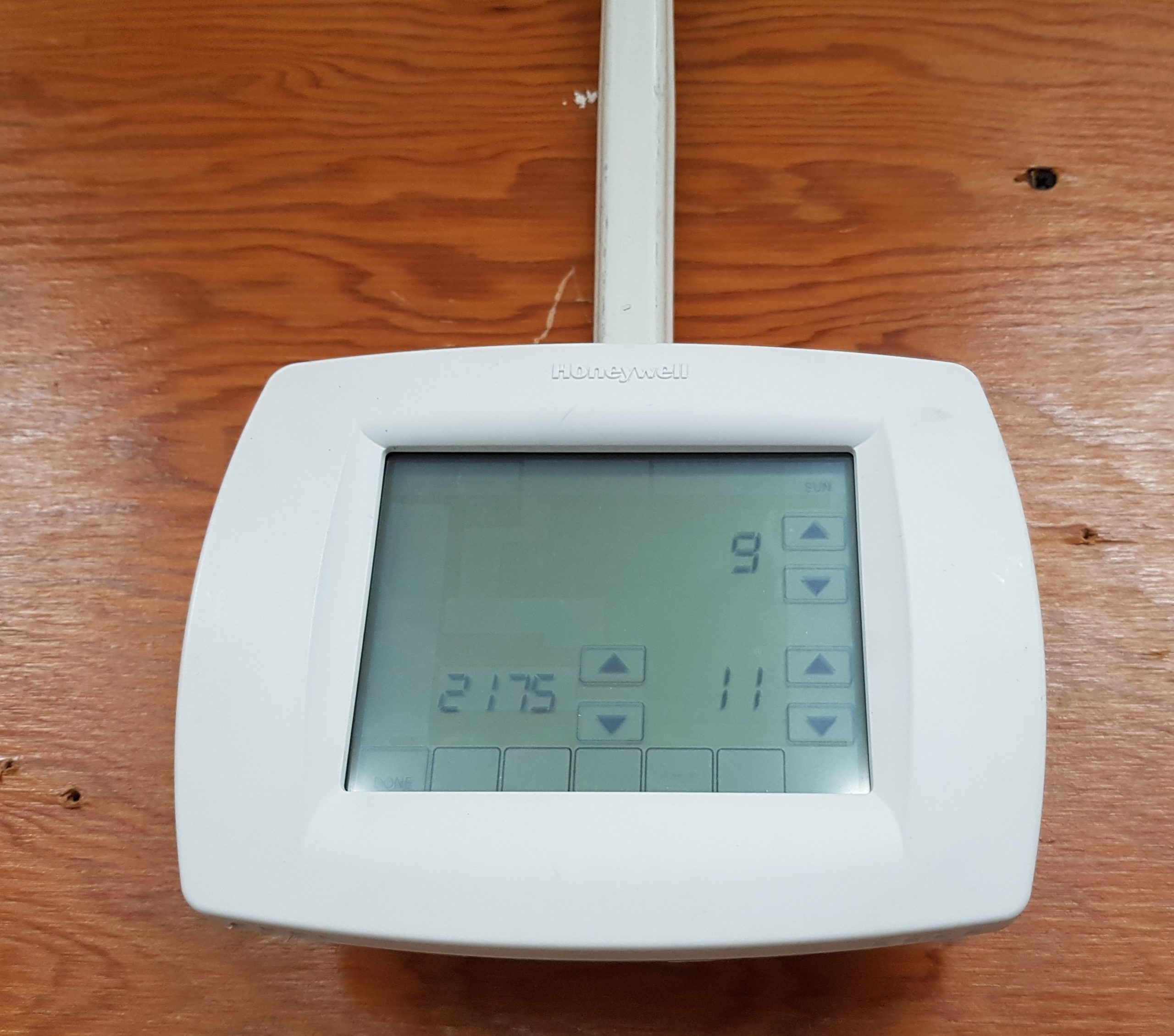Heating
9 Low-Voltage Thermostats
Click play on the following audio player to listen along as you read this section.
Low-voltage thermostats are smaller and cheaper to install and maintain, and the wiring does not need to have as high a voltage and power rating as their line-voltage counterparts. This is why low-voltage control circuits are favoured for central heating units. Low voltage thermostats are also more sensitive to changes in heat than line-voltage thermostats, and so can provide more precise control.
When controlling a single large heating unit, such as a central gas furnace or electric furnace, there is no zone control as with baseboard heaters; either the whole house is getting heated, or none of it is. A low-voltage thermostat installed in a central location, and powered by a 120 - 24V transformer, can senses the ambient temperature and be used to control a relay to deliver power to the heating load.
By using an extra-low-voltage source for the control circuit we get the benefit of lower cost and easier installation along with increased safety, allowing a simple two-wire low-voltage cable to be installed in an ideal location in the house. Because it is only meant to handle the control current and not the load current, low-voltage thermostats are highly responsive and can provide more accurate control than line-line voltage thermostats.
Some models of low-voltage thermostats used to control central gas furnace or electric furnace loads incorporating heat exchanges and blowers, will have a small, series connected, resistive device called an anticipator resistor. The purpose of this device is to fine tune the sensitivity of the thermostat and prevent overshoot of the desired room temperature.
Low-voltage thermostats, fall into two general categories, some are simple temperature activated switches while others are more modern electronic thermostats incorporating solid-state circuitry and allowing for programmable behaviours such as 24-hour cycles, and weekday vs weekend scheduling.
Electronic thermostats use semiconductor components for both temperature sensing and control-circuit switching. If installed to replace an existing analogue thermostat, the electronic thermostat must have a separate power source, which is usually a battery.

A temperature-activated switch that operates below 30V.
A control circuit which operates below 30V.
Main unit that converts natural gas into heat via heat exchanger and usually includes a blower motor.
Main unit that converts electrical energy into heat via resistive coils and usually includes a blower motor.
Often called a “doorbell” transformer, this device converts the line voltage of 120V found in most AC circuits into an extra-low-voltage value of 24V which powers the control circuit.
An electromechanical switch that can be opened or closed remotely by small sources of voltage.
Any voltage not exceeding 30V. Equipment energized at 24 V is commonly referred to as the "low voltage circuit".
A resistor that is physically mounted inside a room thermostat, and any heat generated by it will directly affect the temperature-sensitive bi metallic strip inside the thermostat.
A thermostat with a programmable feature.

